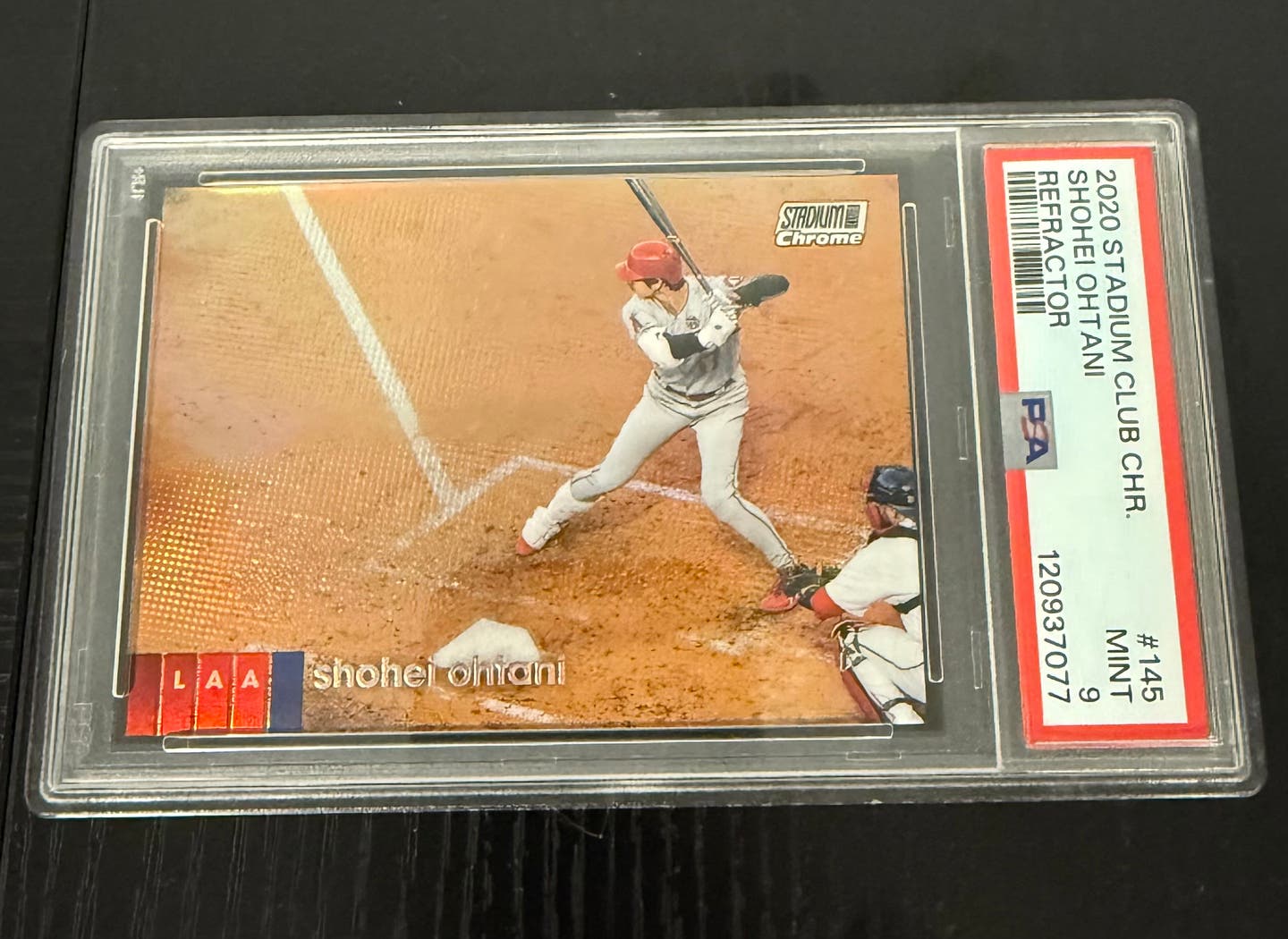Collector Shows
The view from the other side of the National table
I have always been a card collector and had never ventured very far at shows to the other side of the table, otherwise known as the dealer’s side. I did set up my own table once in 1982 at a local show, which proved to be an early lesson in what is involved in trying to organize, price and sell cards.
Once a dealer asked me to watch his table while he went to the bathroom. I made one sale at list price, which reminded me of a business law lecture dealing with the six types of agency and how far my authority likely extended during this “bailment relation” with cards under my care, custody and control. But I had never spent any quality time on the dealer’s side of the table.
Dealer’s helper for three days in August
At this year’s National in Chicago, I finally had that opportunity. I responded to a dealer looking for table help for the Friday, Saturday and Sunday sessions. I arrived punctually on Friday morning to begin my three-day career as a paid dealer’s assistant. As I entered the convention center, I put one of the dealer’s badges around my neck and strolled through the front door with just a courteous nod from the gatekeepers. I was already a veteran.
I got to my table and was given detailed instructions on recording sales, watching the cards and where the albums should be kept. Fortunately, I needed no instructions about the inventory itself. I had in my own collection virtually every post-1933 sports card that was for sale. However, my own collection started from the cards I had as a kid. We were not into square corners, keeping cards in numeric order or even completing sets. We liked the players and the stats; the more players the better for those dice baseball games and trading.
I was working for a hobby veteran, and he had a wide assortment of cards in great condition. I soon learned that it’s hard to generalize about collectors and dealers while just sitting at one table.
The National attracts collectors interested in many different collectibles: vintage cards, recent cards, graded cards, well-loved cards, baseball, football, basketball, hockey, non-sports, photos, bobble heads, pennants, figurines, autographs, jerseys, cereal boxes, publications, equipment, seats and anything else that might attract the collector’s interest. Dealers responded to those needs, yet no one had everything a collector might want.
The people coming to our table were those interested in vintage, non-graded, quality-condition cards. The customers at our table were not numerous, but they were serious and would spend the money to get what they wanted. I also found that they enjoyed talking about what they were collecting and sharing their views on the hobby. With virtually every sale, there was some discussion about the set, the tough cards, condition, centering, variations and/or players.
The sales begin
An exception to that experience was “my” very first sale. A fellow came up to the table looked at one album, picked out one $35 football card and said he would take it. Per my instructions, I asked him his name for our records. He handed me his card: Bill Mastro. I told him my name, which he recognized as well. I had talked to Bill several times doing articles on hobby history, but we had never met in person. Sale completed, Bill was off and running.
Another individual stopped by and started looking carefully at the 1957 “Lucky Penny” baseball insert cards. Since I had an interest and knowledge in variations, I mentioned the insert and checklist variations in the set. He responded with interest, in fact, enthusiasm. He was so enthusiastic, I asked him his name quite early in the process. It was Larry Leonard. I couldn’t believe it. A few years back I wrote an article in SCD about Larry’s collecting interests. He was as avid a variation collector as I was.
I met Professor Larry briefly a few years back, and we had corresponded and exchanged cards numerous times but we didn’t quickly recognize each other. It was a reunion of variation gurus. Fortunately, there were no other customers to attend to, so I could visit with Larry. We talked about the “k” in Repulski in the 1960 set. Another customer chimed in with an unlisted variation involving Drabowsky in the 1959 set – although I would categorize it as a modest printing difference. We would have kept talking about variations up though Billy Ripken, if we had the time.
The collector/writers
The hobby “press” visited the table. T.S. O’Connell of SCD stopped to say hello. Professor Tim Newcomb co-authored with Todd Schultz a scholarly article in the last Old Cardboard magazine on M101-5 and M101-4s. He came away with some top tobacco cards. Reid Creiger writes for Beckett and was at the table working away at basketball and football upgrades. We all enjoyed discussions about the cards and collecting.
“Buzz”
While this was all very interesting, my assignment was to help sell cards and see that none of the cards sprouted “legs” and left the table without our best wishes.
I have attended every National held in Chicago and most major shows in Chicago over the past 27 years. From my vantage point, the zenith as to “buzz” and attendance was the McCormick Place Convention Center show in the early ’90s. People seemed to be reaching over one another to hand money to dealers at a thousand tables, but times change.
The pace of each subsequent Chicago National seems to have slowed. There is no rush of people, no lines. Collectors can stroll and stop at whatever table they choose. Those manning the table might be momentarily preoccupied with their inventory, fellow booth holders or their laptops, but you do get their attention. At most booths, customer visits were the rarity between periods of walkers-by or casual glancers. But it all depended on what you were selling. A table with bargain bins might have several lookers and searchers producing modest sales, while tables with pristine quality cards might attract a buyer per hour who might spend more than the bargain hunters.
Buyers
I learned that you can’t judge a book by its cover when it comes to collectors. A dealer observed that some of the biggest spenders on cards might not give a hoot about spending anything on fashionable clothes or even clothes from this century. When someone approached the table, I tried to anticipate their interests and help them out if needed. What they were wearing didn’t seem to enter the equation. How they opened an album, how they paged through the cards and how they reacted to prices did tell me something.
The number of fellow dealers buying cards was significant. They were interested in upgrading sets or finding rare cards for their own collections, like everyone else. There were no kids buying at our table. With some 350 dealers listed in the program and thousands of square feet to cover, collectors made quick appraisals of their likelihood of finding what they wanted. Most hardly broke stride as they passed. Others stopped to kick a few tires. A few started fumbling with the merchandise. (Ouch! Be careful not to bend those cards.)
Fewer still found what they wanted and got hooked. Once involved, they might spend two hours searching and buying. It isn’t easy on either side of the table – finding what you want or making the sale.
Logical approaches to selling
Even though I only sat at one table, I was there for three days and I was learning. It seemed from my vantage point that each dealer had made their own very rational decision as to what worked for them and what they enjoyed selling. Everyone had a different twist on how they displayed and priced their product, which made sense to them. They also had experiences as to cards “walking off” and how to prevent or minimize the possibility.
At “my” table, everything was ungraded, high quality, priced, in albums on the table, and in numeric sequence with albums organized in a logical order. Others, like Dick Zimmerman, had chosen to take less space so that some of the inventory stayed in albums behind the table. Some didn’t price individual cards or put them in order – just start hunting and haggling. Others, like Greg Fisher, had trays of protected cards in numeric order for customers to pursue.
Dealers Kurt Tourdot and Bill Henderson had their bargain bins of well-loved cards from every vintage nook and cranny.
Dealer Chandy Greenholt laid all his cards on the table. Just have “at ’em” in a dollar or two per item feeding frenzy. Cardboard and dollar bills flew around despite the modest crowd.
To cover expenses and make a profit worth the time invested, it was clear you needed to lug in a lot of valuable inventory for customers to inspect. At the end of the show, you got to lug the majority of it back home.
Observations
My experience was limited. I was a helper. I didn’t have to figure out what or how to sell. I didn’t have to decide on pricing or what to bring. I didn’t have to lug the cards in and out of trailers or vans, sleep in a hotel, buy all my meals, hire assistants, insure my cards, handle the bookkeeping and worry about the economics.
I did have to deal with customers, sit in a hard chair, walk around on the hard floor and wait for some action. The customers had to lean over the cards more than I did, and my back felt better than when I spent the day on the collector’s side of the tables. I had the advantage of knowing the cards, if not the prices.
I appreciated the effort in working on a set, upgrading cards and searching for that scarce card. The customers were really pretty enjoyable to deal with; we all just need more of them.
George Vrechek is a regular contributor to Sports Collectors Digest.








